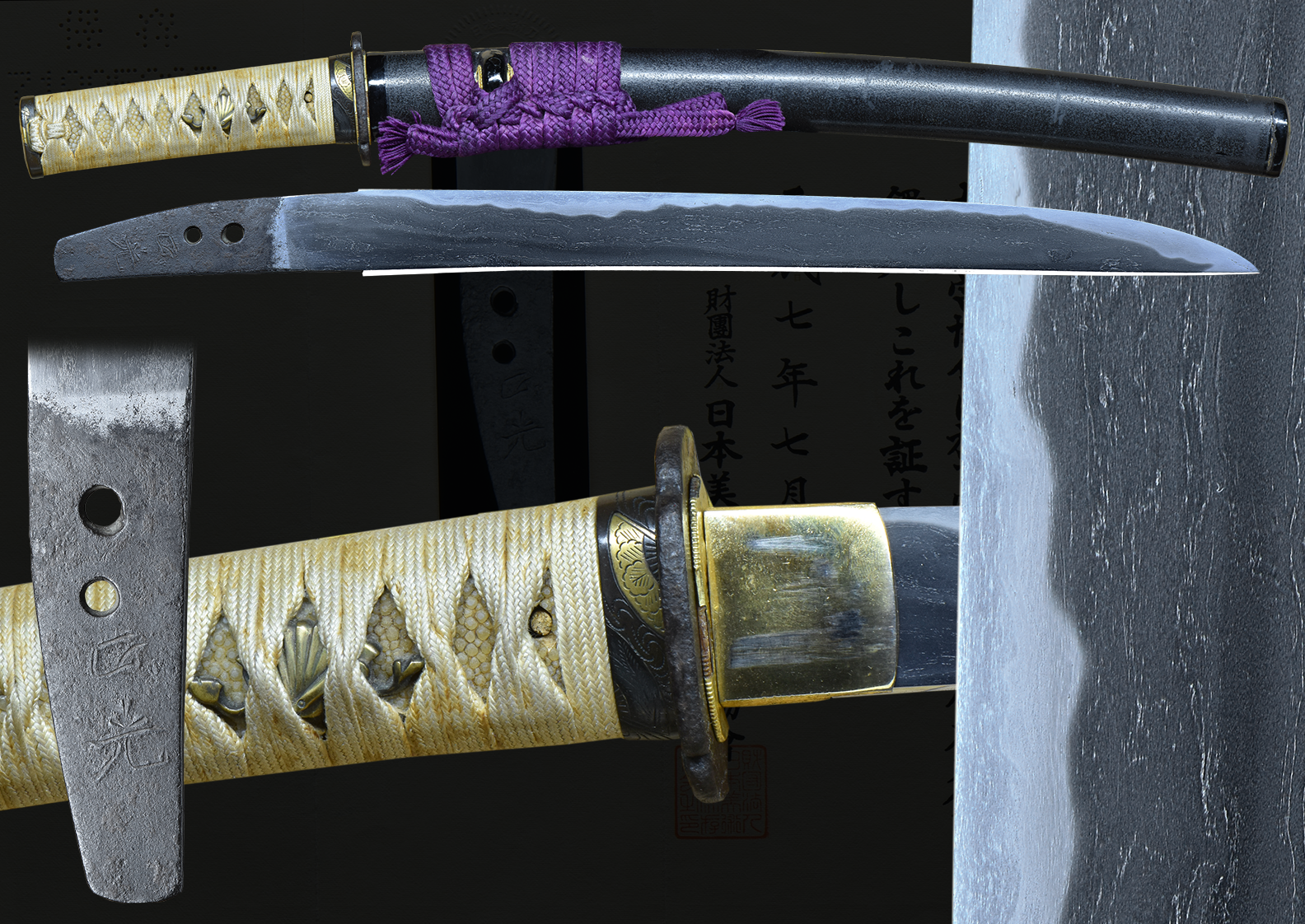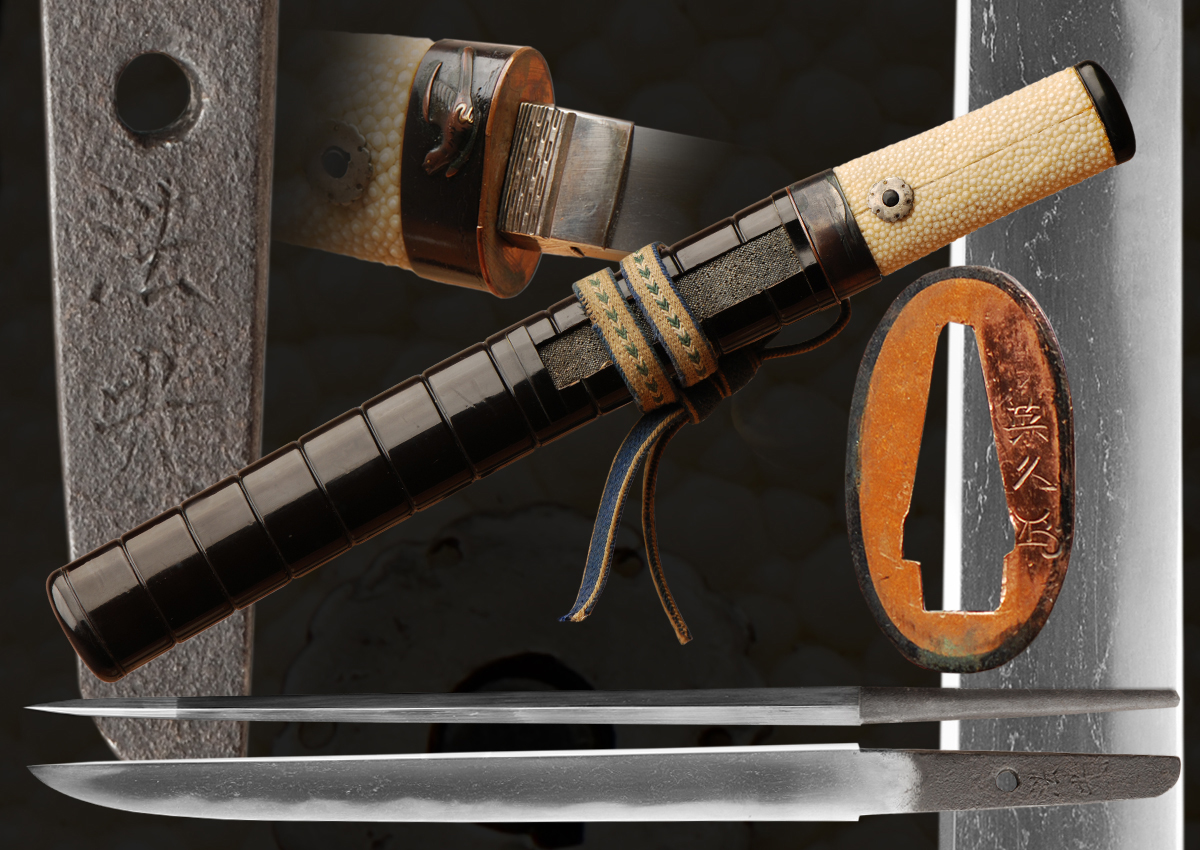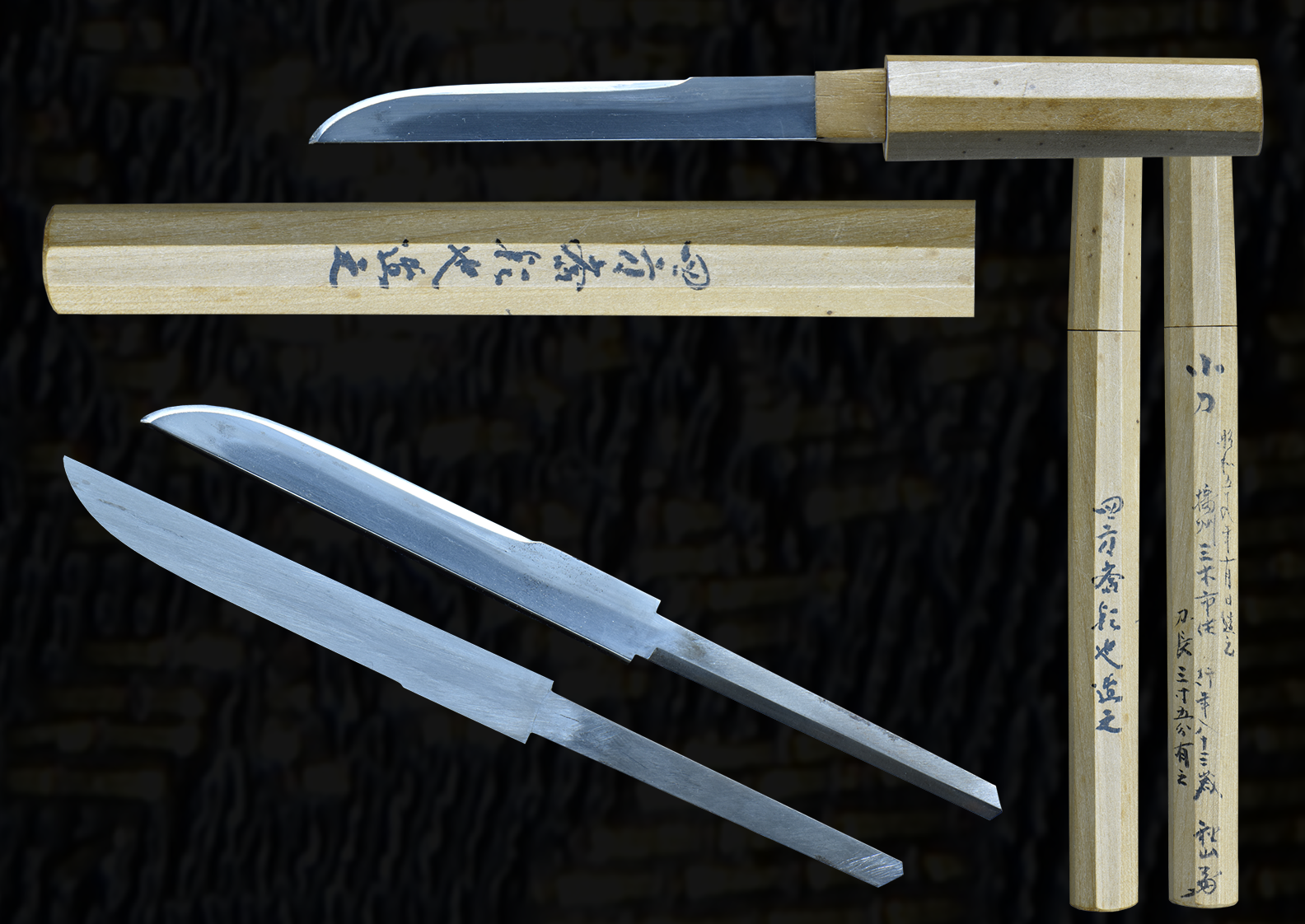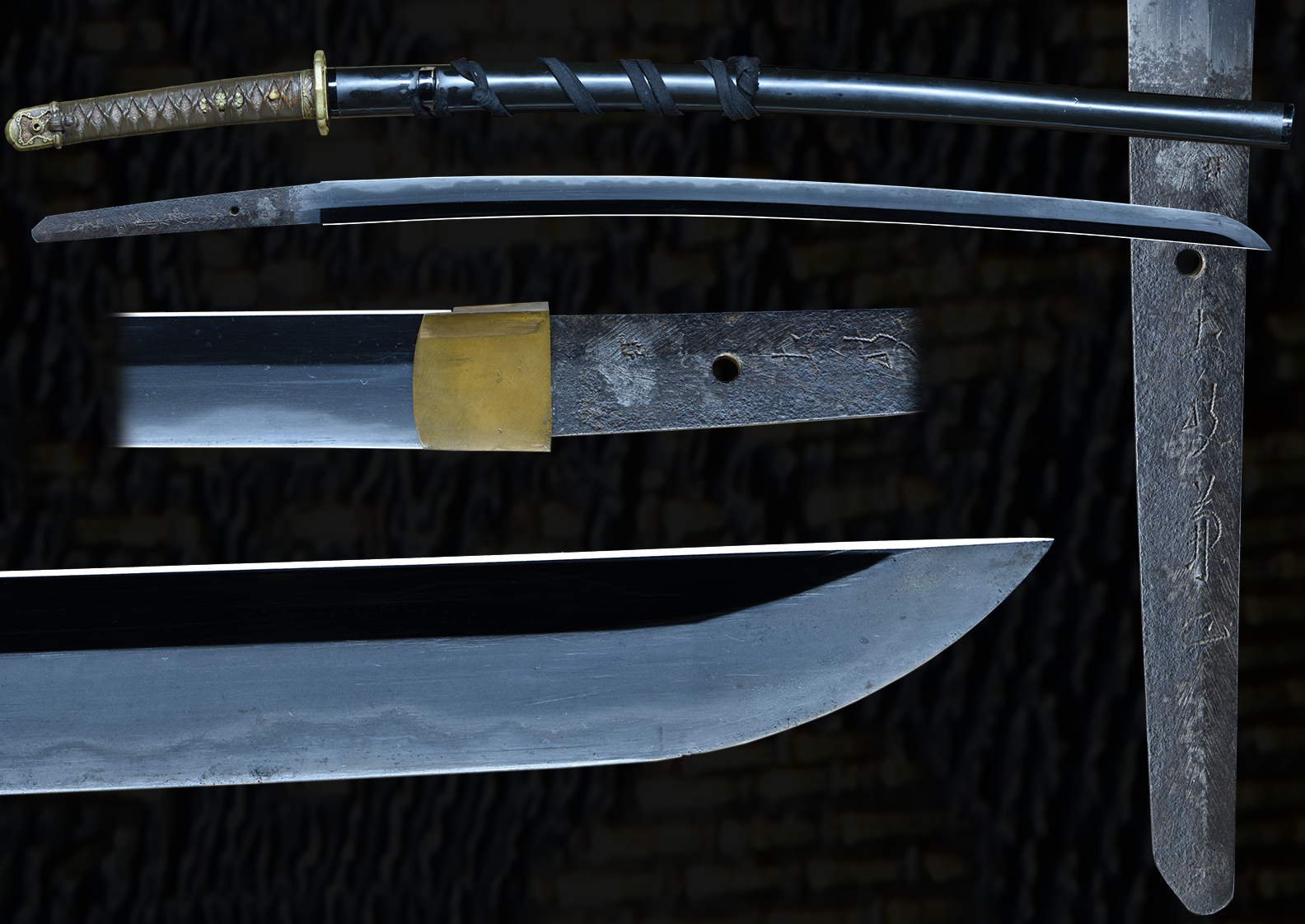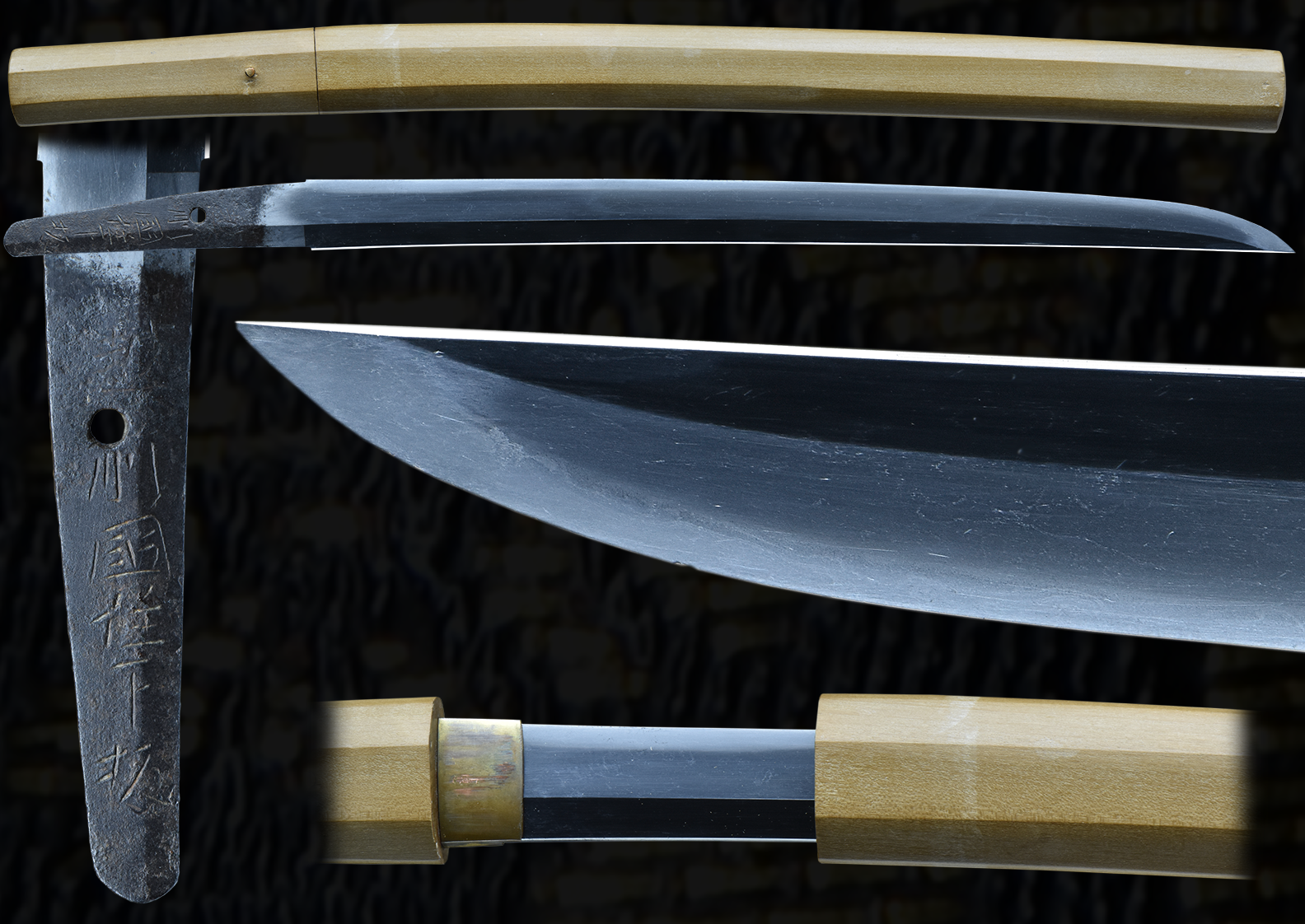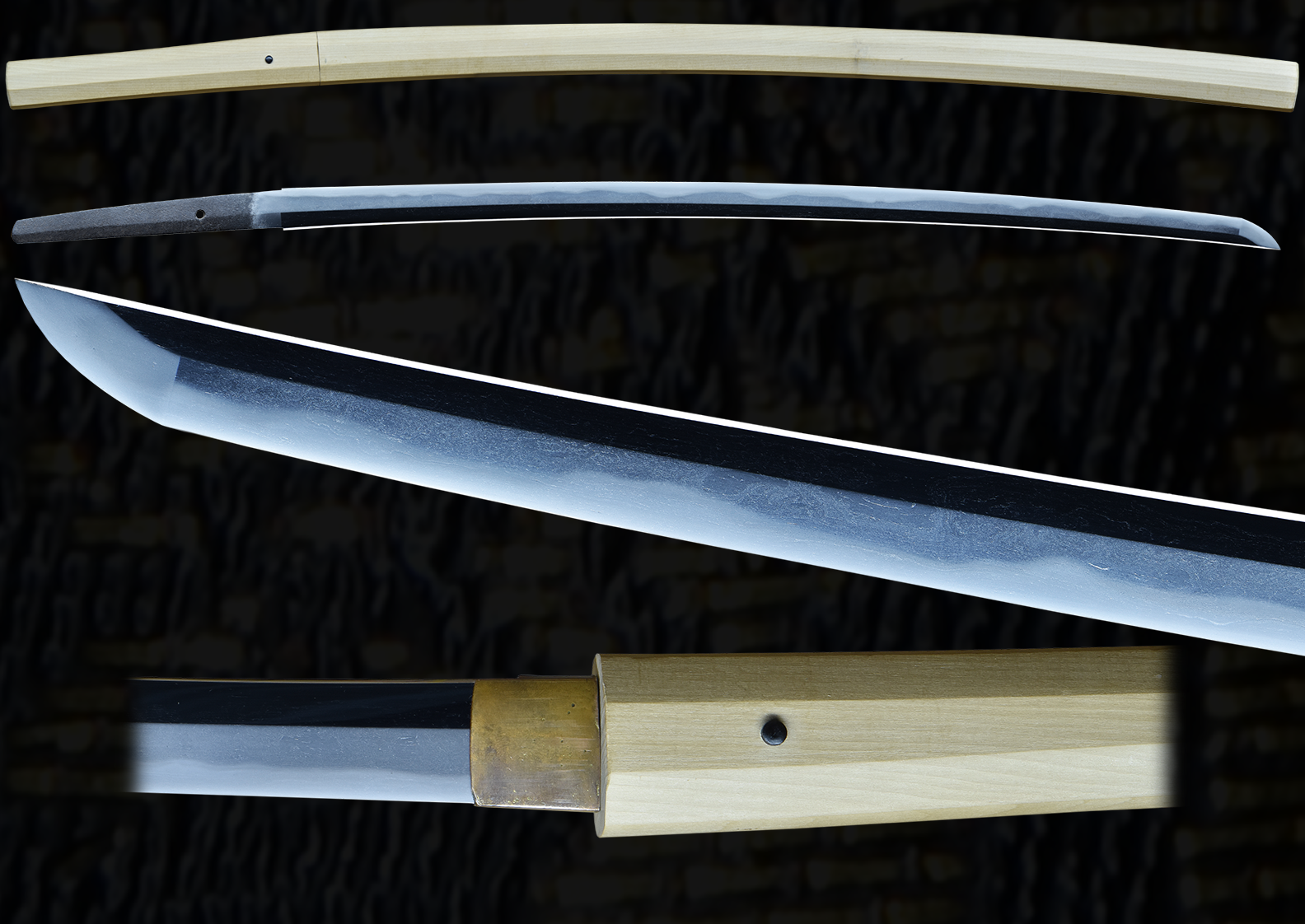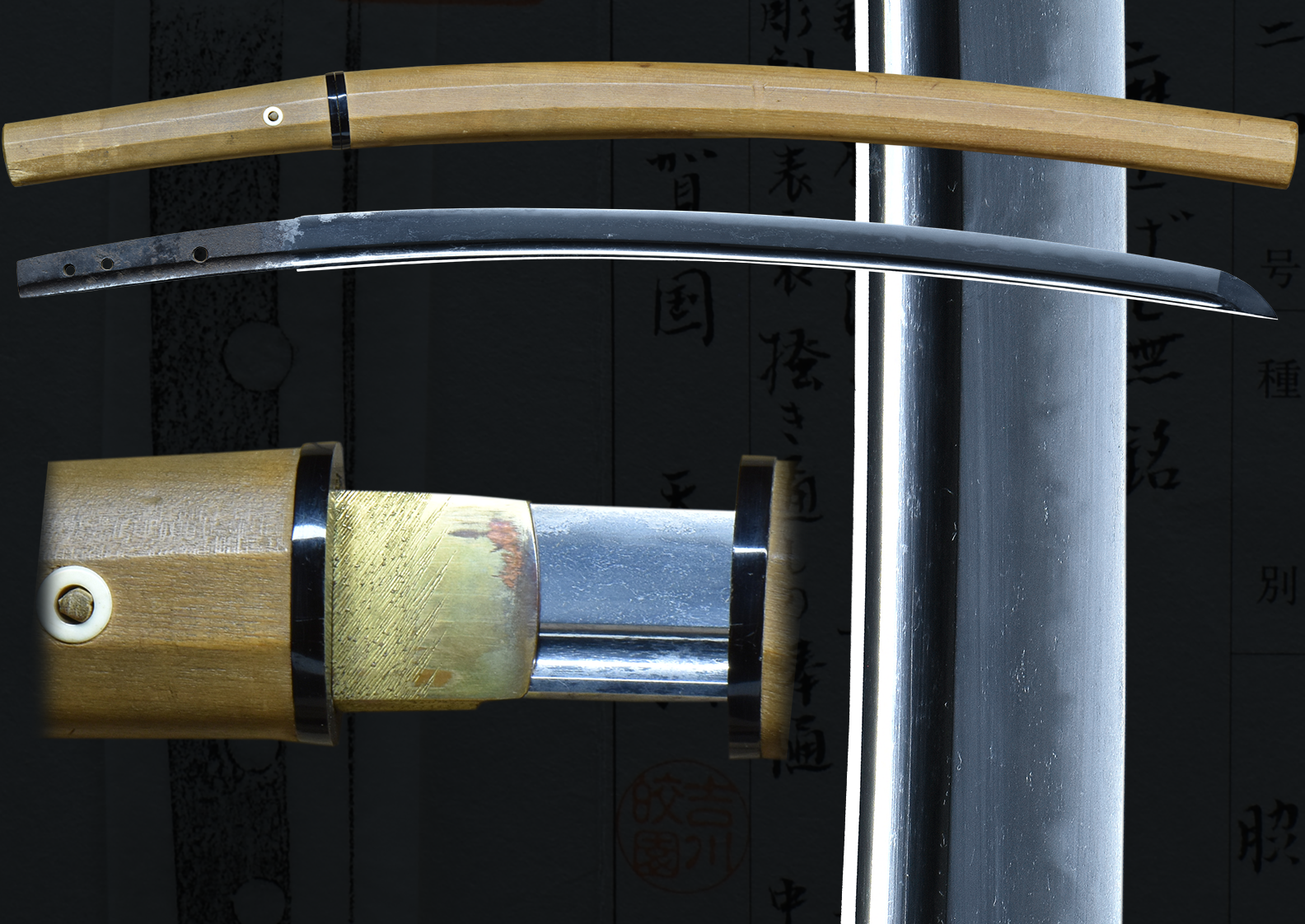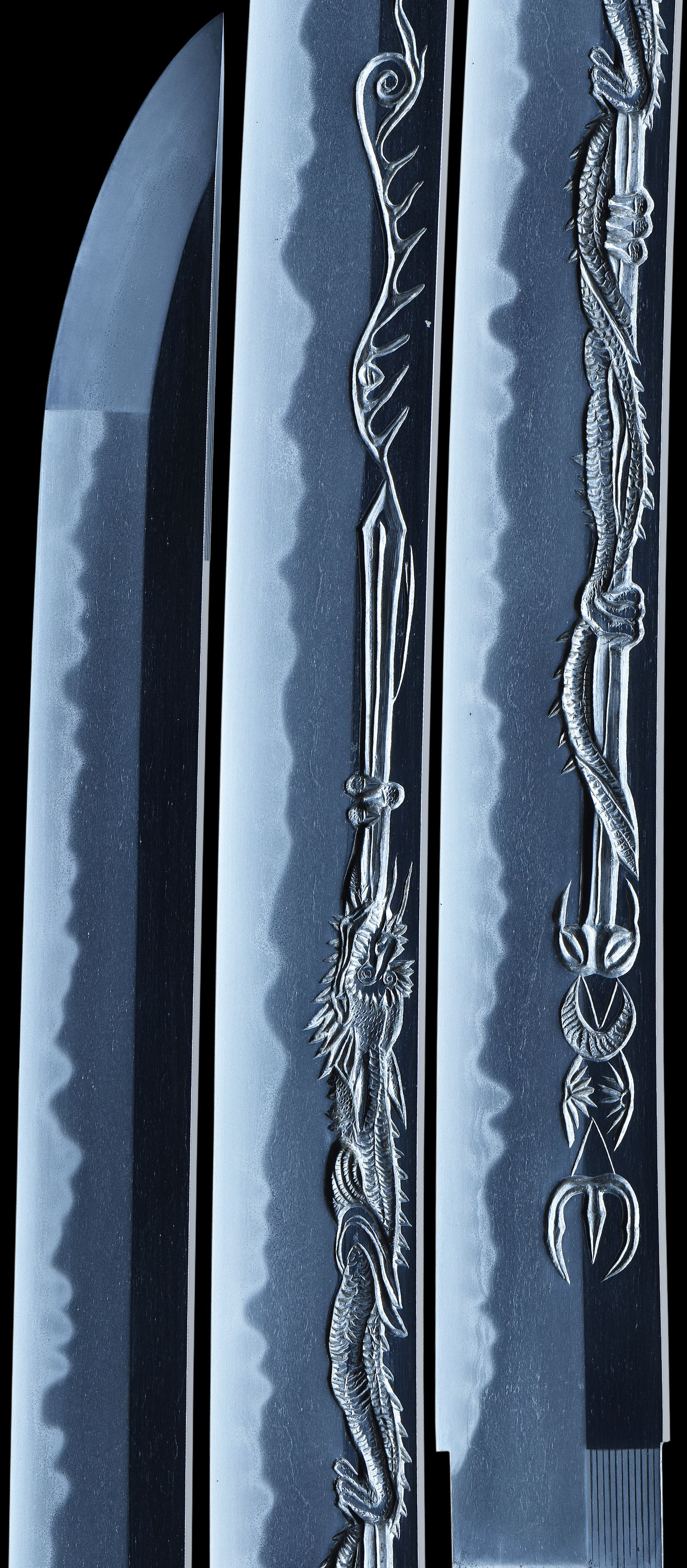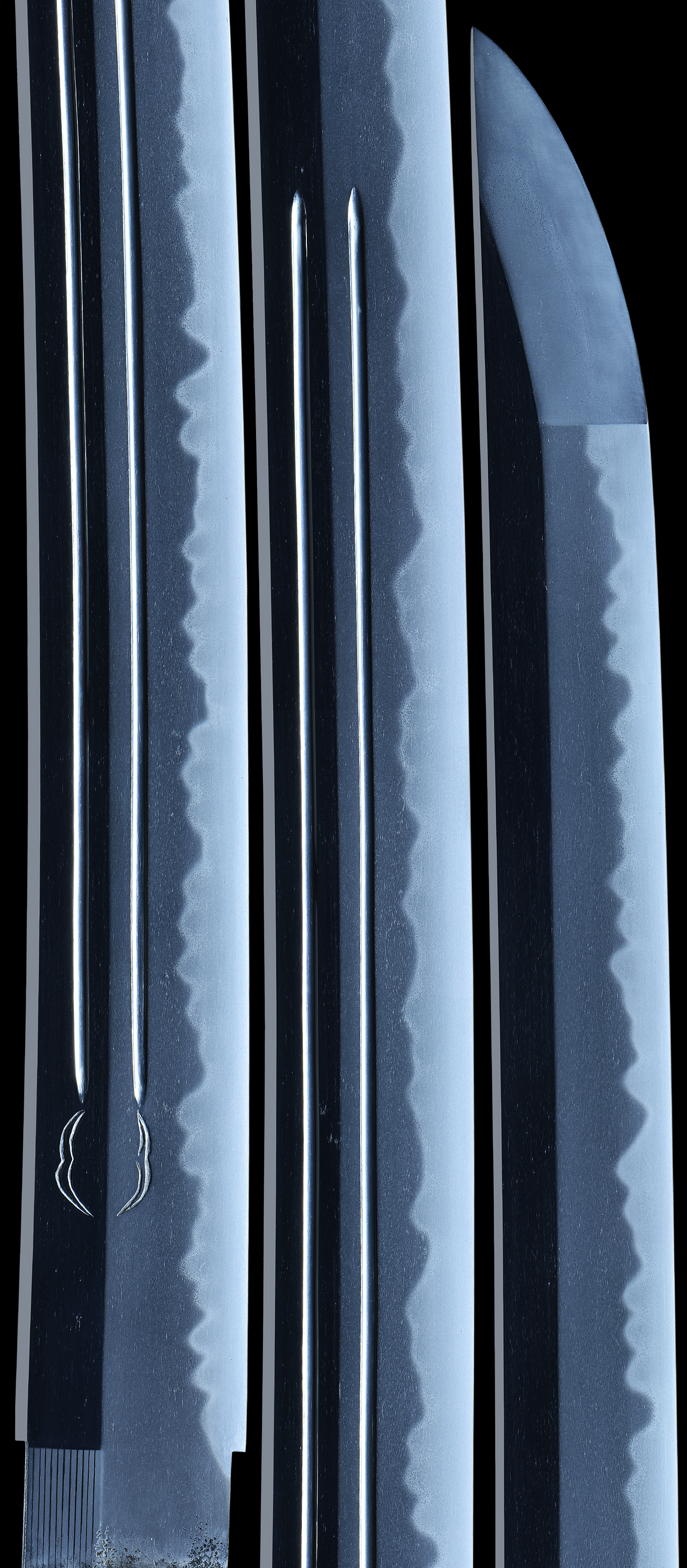This is a beautiful late edo period Katana, This sword is reminiscent of the beautiful work of a bygone era. The blade is a longish 32+” mumei piece with a fine hada and a wavy Gunome-midare in a notare-ish hamon. The hada is a fine Mokume with itame covered in ji-nie . The hamon has a beautiful frosting of both Nie and Nioi. The ko-nie is finely sprinkled the entire length of the hamon. There is sunagashi and kinsugi found within. There is a long ko-maru kissaki full of hakike.There is ji-nie all over this sword. The hamon is made up of a gunome/choji midare set in a notare base which looks spectacular in this polish which is pristine. A fantastic sword with much to enjoy and appreciate.
The koshirae is a beautiful set. These are a matching set of soft metal fuchi/kashira in the gilded Stone style finish. There is a saya of a lacquer mixed with blueish/greenish crushed abalone. There is also a gold washed habaki
This sword with beautiful horimono over 15″ long emulates the great blades from an earlier era. There is beautiful horimono of Gomabashi with claw on one side and “Shin No Kurikara” on the other. The blade is tremendously healthy and in a spectacular polish. The hamon is a very striking gunome midare. There is a well worked fantastic hada of ko- itame and can be appreciated from across the room and can be viewed in the photos.
A note on Horimono;
kurikara (倶梨伽羅) – According to legend, the guardian deity Fudô-Myôô (不動明王) once had to fight a deity from another religion, the dragon king Kurikara, written with the same characters as stated above. He changed himself into a flaming sword but Kurikara did the same and the fighting went on without a winner. But then Fudô-Myôô transformed into the dragon Kurikara, wound himself around the opponent’s sword, and ate it from the top. Also referred to as kenmaki-ryû (剣巻龍, lit. “dragon winding around a sword”). There are quite many kurikara interpretations but basically we differentiate between three approaches that follow the shin-gyô-sô mentioned at the beginning, i.t. shin no kurikara (真の倶梨伽羅, “full” or “realistic kurikara”), gyô no kurikara (行の倶梨伽羅, “more or less abbreviated kurikara”), and sô no kurikara (草の倶梨伽羅, “abbreviated,” “stylized,” or “abstrac kurikara”).
- Mei: Mumei
- Date: Edo (1800’s)
- Nagasa: 32-3/8 inches
- Sori: 15.0 mm
- Width at the ha-machi: 33.1 mm
- Width at the yokote: 24.4 mm
- Thickness at the mune-machi: 7.27
- Construction: Shinogi zukuri
- Mune: Iori
- Nakago: Ubu
- Kitae: Itame/mokume
- Hamon: Midare Gunome
- Boshi: Maru
- Condition: Fresh polish
Click to Enlarge Image
伽羅, “full” or “realistic kurikara”), gyô no kurikara (行の倶梨伽羅, “more or less abbreviated kurikara”), and sô no kurikara (草の倶梨伽羅, “abbreviated,” “stylized,” or “abstrac kurikara”).
(shipping and insurance included)
Email us if your interested in this item and remember to include the order number for this item: fss-891.
Click to Enlarge Image
Click to Enlarge Image
Click to Enlarge Image
Kantei-sho (鑑定書) ‒ Appraisal
Hōnō-tō (奉納⼑) ‒ Offering/dedication sword
Den Suishinshi (伝⽔⼼⼦) ‒ Attributed to Suishinshi
Shōshin (正真) ‒ Authentic
Nagasa 2 shaku 7 sun 2 bu kore ari (⻑さ弐尺七⼨弐分有之) ‒ Blade length ~82.4 cm Heisei 31 nen 3 gatsu 1 nichi (平成三⼗⼀年三⽉⼀⽇) ‒ March 1, 2018 Nihon Tōken Hozon Kai (⽇本⼑剣保存会) ‒ NTHK
No 18766
meibun (銘⽂) ‒ Signature: mumei (unsigned)
kitae (鍛) ‒ Forging: itame
hamon (刃紋) ‒ Hardening: gunome-midare
bōshi (鋩⼦) ‒ Hardening in tip: notare-komi
chōkoku (彫刻) ‒ Engravings: omote side: kurikara ura side: ‒ nakago (中⼼) ‒ Tang: mekugi-ana (⽬釘⽳) 2, yasurime (鑢): ō-sujikai
bikō (備考) ‒ Remarks: Musashi province, around Keiō (慶応, 1865‒1868) Left unsigned as intended as an offering/dedication sword.
shinsaʼin natsuʼin (審査員捺印) ‒ Seals of Judges: 4 seals
For Sale
